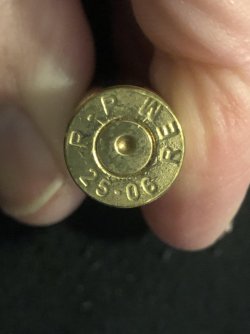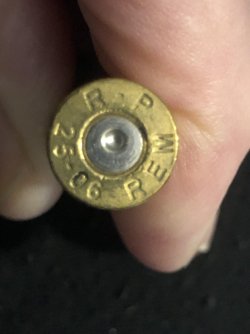Grumpy old man
Well-Known Member
**** near close to it !Hi all,
Looking at some of my fired cases and wondered about the symptoms of pressure and the order they follow. It would seem that you would get primer flattening (pancaking) first, craters second and case head swipes third along the increasing pressure continuum. Is this correct? If one has pancaking in the absence of heavy bolt lift and other symptoms, is that OK? Here is a picture of a case head from my .25-06. A 52.3 H4831 charge pushing a 117 Sierra. Is this too hot?
View attachment 501279


